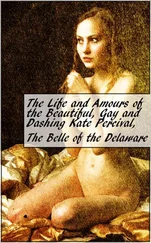Southend-on-Sea was an adventure playground outside work and school hours. It was where a youngster could roam the streets as a teddy boy. In the mid-1950s, British boys and girls thrilled to the new sounds from the States, together with the paraphernalia of being a teenager: B-movies, horror comics, pop records and trendy fashions. Where once they had jived to Ted Heath and his Orchestra, they now learned to rock’n’roll to Bill Haley and the Comets, Elvis Presley, Gene Vincent and Little Richard. Aged just eleven when rock’n’roll first broke, Anthony was too young to be in with the gangs. He bought his first pop records instead: ‘Rock with the Caveman’ by Tommy Steele and ‘Giannina Mia’ by Gracie Fields.
English kids adopted the clothes, slang and violent habits of teddy boys, taking their name from the Edwardian styles that became fashionable at the start of the decade: drape jackets with velvet collars and thick-soled shoes nick-named brothel creepers. On the back cover of Stanshall’s 1981 album Teddy Boys Don’t Knit , there is a black-and-white snapshot of him as a youngster, sitting sprawled with his mates on a bench in the street. They loaf in the maliciously indolent way that only teenage boys can, under a Southend police noticeboard. A ‘Keep Britain Tidy’ poster depicts a huge finger pointing directly at Stanshall’s head. Clad in blue suede shoes and drainpipe jeans and sporting a Tony Curtis hairstyle, he sits and grins, sporting the kind of expression that members of the officer class might have interpreted as dumb insolence.
Being a ted ‘meant wearing second-hand clothes with collarless shirts and corduroy suits’, remembers Mark Stanshall. ‘Vivian always took it to the max and wore a complete frock coat and top hat. He always loved to be looked at and liked to be the centre of attention.’ Twenty of them on motorbikes would tear around, waking up the neighbourhood. ‘My father, being ultra-conservative, couldn’t cope with a son who was always wandering about looking like a Victorian doctor with all these musical instruments piling up.’
The teds were the toughest of all working-class lads, notorious for gang fights with bicycle chains, particularly at such south London flashpoints as the Elephant and Castle. The craze spread all over the country and was established in Southend just as a teenaged Stanshall headed for the streets in search of freedom. There he found a gang culture that appealed to a growing love of ritual, folklore and strange languages. There would be battles on the pier that was supposedly the preserve of pleasure-seeking families, between the Leigh gang, the Benfleet boys and the Southend mob. By the time he was sixteen, Anthony ran with the local Leigh boys. Inconveniently for his street cred, Eileen had taught him to crochet as a young child. This was anathema to his fellow-gang members, as he attested in the aforementioned album title, Teddy Boys Don’t Knit. His posh accent surfaced occasionally, but this meant he was tolerated as an ‘amusing mascot’ by the gang. A rival team of interlopers might come down from Dagenham and from the pier entrance right up to the High Street there would be a reception committee.
It was a testosterone-fuelled time for Anthony and he later worked it into his music. ‘When I feel particularly aggressive…I use the most aggressive part of my life which I suppose was the 1950s when I was a teddy boy.’ 19He was arrested with his gang, instilling in him a healthy disrespect for the law – or at least the law as practised in Southend.
‘The police were notorious, and I was falsely accused of assaulting a policeman,’ he later said. ‘I was said to have hit a policeman with such force he had to be picked off the pavement. It was absolute rubbish, but I was found guilty. I had to spend a night in a cell with the light on all the time, and I wasn’t allowed to use the lavatory. It was hateful. I think there should be more education for the police.’ 20Back home, he hid the drape jacket and drainpipe trousers behind the coal bunker to become well-behaved Narnie indoors.
Street culture met his artistic influences and laid the foundations for a serious drink problem. According to his second wife, Ki Longfellow: ‘He believed all this shit about what a real artist goes through,’ she says. ‘A real artist drinks red wine and smokes and lives in a garret. A really great artist dies young. So he began drinking when he was thirteen years old, but this was normal, hanging out with the guys he met on the streets.’ He was beginning to find out who he was – and that was different: ‘I didn’t enjoy it,’ he later told an interviewer. ‘It’s just that when I was thirteen and growing my first beard, I just went up to the top of my road in Leigh-on-Sea. I was pointed out by a little boy and his mother said, “Shh…He’s a crank.” So I thought, “That’s it, that’s what I am.” I mean, it’s very handy to know what you are.’ 21
The other important teenage business was love. His first love was a girl named Mary. They met when he was fifteen and he was ‘insanely in love’ with her for many years. She thought he looked like nothing on earth, with his colourful clothes and his newly acquired artist’s beret. He rode to her school on his bone-shaker bicycle, waiting for her near the tennis courts. She too was taught by nuns, who instinctively disapproved of this strange young man and banned her from going out at lunchtime. Waving at Mary from the side of the tennis courts, Stanshall attracted the attention of the PE teacher, who became convinced there was a pervert near the grounds. The teacher strode over and told him to make himself scarce. Mary’s attempts to explain that it was all right because she knew this particular ‘pervert’ fell on deaf ears.
Neither of the two young people had much money and were rarely on their own together. They went for long walks along the seafront by Old Leigh and out on the sands. Mary was invited to the Stanshall house where, to her astonishment, her boyfriend was called Anthony – by now he was Vivian to everyone outside the familial home. The atmosphere chilled when the boy’s father returned, Eileen’s personality changed and the house became quieter. After that, Mary did not visit when Stanshall Senior was at home.
Anthony was now Vivian, much to his mother’s chagrin. He later made the change of name permanent. ‘He did it properly by deed poll,’ says Eileen. ‘He did that because he wanted to be in show business and he thought it sounded better.’ Vivian wanted another name change too: he asked Mary to marry him. Eileen did not approve. She was certain the girl was too young to understand her true feelings. She also knew that she wanted her son to finish art school and so she took Mary into the kitchen one day to tell her that the wedding would not have her blessing or that of her husband.
‘If you love him, you’ll wait,’ she told Mary. They might have waited until Vivian was twenty-two, but it was never to be. This was not because of Eileen: she was adamant that her Narnie would never go behind her back and Vivian was just as certain that he could have done so. It did not come to that. Crushingly, Mary turned him down. Vivian cried for a week and always believed that Mary came to her decision because she lacked faith in him. While he might have been colourful and great fun to be with, underneath it all he thought that in her eyes he would never amount to anything. Yet his career prospects were the last thing on her mind.
‘I just didn’t believe you, that’s the bottom line,’ Mary admitted to Vivian when they met years later. ‘I just didn’t take you seriously, ever, because you used to disappear out of my life and then suddenly turn up again.’ 22The relationship ended, but the couple would never forget the vivid memories of their first love. Vivian was even more determined to get his degree.
Читать дальше












